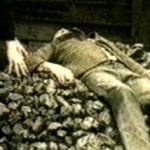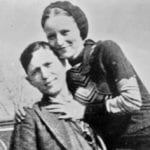 Animals
Animals  Animals
Animals  History
History 10 Most Influential Protests in Modern History
 Creepy
Creepy 10 More Representations of Death from Myth, Legend, and Folktale
 Technology
Technology 10 Scientific Breakthroughs of 2025 That’ll Change Everything
 Our World
Our World 10 Ways Icelandic Culture Makes Other Countries Look Boring
 Misconceptions
Misconceptions 10 Common Misconceptions About the Victorian Era
 Mysteries
Mysteries 10 Strange Unexplained Mysteries of 2025
 Miscellaneous
Miscellaneous 10 of History’s Most Bell-Ringing Finishing Moves
 History
History 10 Great Escapes That Ended Right Back in Captivity
 Weird Stuff
Weird Stuff 10 Fascinating Things You Might Not Know About Spiders
 Animals
Animals 10 Animals That Humiliated and Harmed Historical Leaders
 History
History 10 Most Influential Protests in Modern History
 Creepy
Creepy 10 More Representations of Death from Myth, Legend, and Folktale
Who's Behind Listverse?

Jamie Frater
Head Editor
Jamie founded Listverse due to an insatiable desire to share fascinating, obscure, and bizarre facts. He has been a guest speaker on numerous national radio and television stations and is a five time published author.
More About Us Technology
Technology 10 Scientific Breakthroughs of 2025 That’ll Change Everything
 Our World
Our World 10 Ways Icelandic Culture Makes Other Countries Look Boring
 Misconceptions
Misconceptions 10 Common Misconceptions About the Victorian Era
 Mysteries
Mysteries 10 Strange Unexplained Mysteries of 2025
 Miscellaneous
Miscellaneous 10 of History’s Most Bell-Ringing Finishing Moves
 History
History 10 Great Escapes That Ended Right Back in Captivity
 Weird Stuff
Weird Stuff 10 Fascinating Things You Might Not Know About Spiders
10 Strange Little-Known Unsolved Mysteries
The bizarre, the unusual, the amazing, the unexplained—these strange subjects continue to fascinate us, don’t they? Since we can’t get enough, in a follow up to a previous list, here are ten more unsolved mysteries we don’t hear about every day.
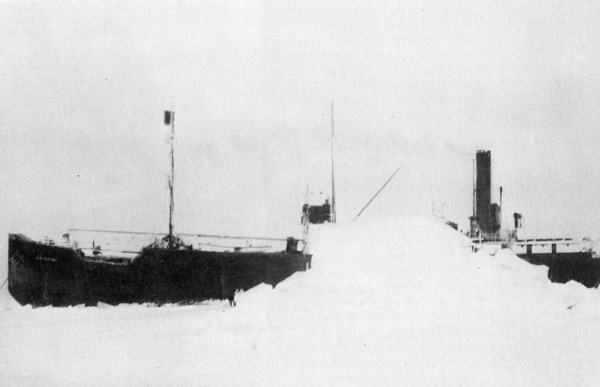
The Baychimo, a 1,322 ton steam ship owned by the Hudson Bay Trading Company, regularly traveled to Alaska and British Columbia transporting goods and passengers, and fur trading with the Inuit who lived along the Beaufort Sea.
On October 1, 1931, Baychimo was making a return trip to Vancouver. She’d completed a run to Victoria Island, and her hold was stuffed with furs. Unfortunately for captain John Cornwell and the crew, winter arrived sooner than expected with freezing temperatures, strong winds, and the threat of blizzards. Baychimo became stuck fast in the pack-ice, and the crew were helpless to do anything except wait.
Luck seemed to be on the captain’s side since two days later, the ice shifted and Baychimo broke free, but Dame Fortune was fickle. The ship continued to be trapped, then released by the thickening ice. By October 15, the Hudson Bay Company sent airplanes to rescue twenty-two of the crew, but the captain and fourteen other crew members stayed behind, building a shelter on the ice. Imagine their surprise when they awoke on November 25, the morning after a terrible blizzard, to find Baychimo gone.
A few days later, a seal hunter told Cornwell he’d spotted the ship adrift about forty-four miles (71 km) southwest. As time passed, the company continued to receive reports from eyewitnesses who had seen the drifting ghost ship. By 1939, scores of sightings were reported. However, no one was able to catch up to Baychimo, which continued to uncannily elude pursuit. The last sighting occurred in 1969. Despite recent searches, the ship’s ultimate fate remains unknown.
Discover more of history’s most bizarre mysteries with The Best of Unsolved Mysteries at Amazon.com!
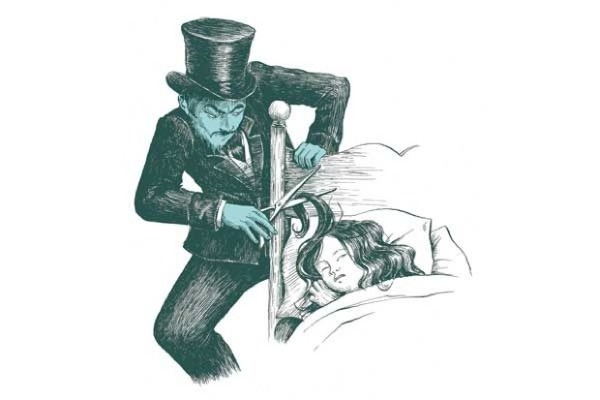
In June 1942, after a population boom brought about by the increased manufacturing of warships in the area, the citizens of Pascagoula, Mississippi were stalked by more than the specter of war—a hair cutting phantom terrorized the night.
The man nicknamed the Phantom Barber by newspapers worked in the darkness made more profound by the Army’s blackout regulations. On Monday or Friday evenings, he slit a window screen to gain access to a house, crept inside, and cut the hair of sleeping occupants, particularly blonde girls. Not necessarily one lock or two, but sometimes shearing as much as a full head of hair. He took nothing else from the home except his prize.
He began with two young girls in the convent of Our Lady of Victories, followed by a six year old female child visiting another family. That time, he left a clue—the print of a man’s bare foot in sand on an unoccupied bed in the room. The police were baffled and offered a $300 reward for information. The public was in a panic. Women refused to go outside at night. Men applied for pistol permits. Bloodhounds were brought in to track the bizarre intruder, but the efforts failed. The Phantom Barber continued his hair cutting incursions.
At last, the phantom broke his pattern, or so it seemed. A window screen was slit in the home of Mr. and Mrs. Terrell Heidelburg, and the intruder came inside their bedroom. However, rather than cutting hair, he brutally assaulted the couple. Mrs. Heidelburg lost her front teeth and was knocked unconscious, while her husband was beaten with a metal bar. Both survived the attack. Two months later, the police chief announced the arrest of a suspect, William A. Dolan, a chemist, who was charged with attempted murder.
A connection between Dolan and the Phantom Barber came with the discovery of human hair allegedly found near his residence. He continued to deny he was the phantom, and while convicted of the attack on the Heidelburgs—he bore a grudge against Terrell’s father, a judge—was never charged with the phantom’s acts. Since the Phantom Barber never touched his victims other than their hair, it would seem no meaningful tie exists between Dolan and the Phantom Barber, whose break-ins ended as mysteriously as they began.

In Atlanta, Georgia, just prior to midnight on September 8, seventy-seven year old Minnie Winston found what appeared to be blood splattered on her bathroom floor and fetched her seventy-nine year old husband, William. Further searching by the couple revealed more spots of red, blood-like fluid on the bathroom’s lower walls, the kitchen, living room, bedroom, hallways, and basement. Blood was also found in a crawlspace and under a television set.
Nothing like this had ever happened in their rented house before and the couple were understandably alarmed. They owned no pets and lived alone together. Unable to come up with a satisfactory explanation, and with blood continuing to come out of the floors and walls, Minnie and William called the police.
At first, their concern wasn’t taken seriously. William regularly underwent dialysis at home, but he and his wife insisted the blood belonged to neither of them. On police investigation, laboratory results showed the liquid was human blood, Type O. Both William and Minnie were Type A. Once detectives ruled out evidence of wrongdoing, they were at a loss to explain the phenomena and dropped the investigation.
Was the “bleeding house” a hoax perpetrated on the Winstons? Or evidence of poltergeist activity? We’ve been unable to discover what happened to the couple following the events in 1987. Current records indicate the house at 1114 Fountain Drive is occupied.
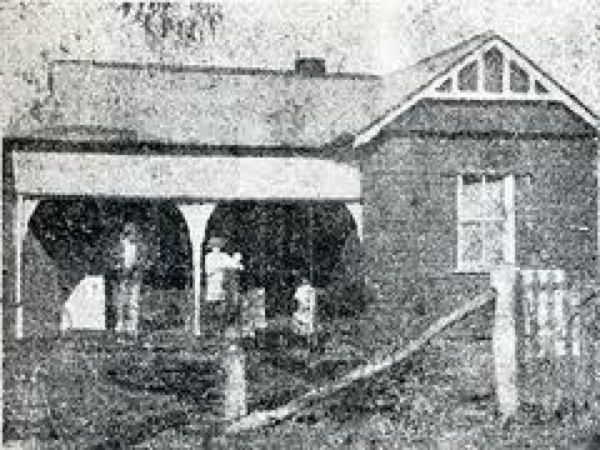
Around April 8, the Bowen family in Guyra, New South Wales, Australia, was terrorized by heavy thumps and bangs on the walls, followed by showers of stones striking the roof and the outside of the house, sometimes breaking windows.
The apparent poltergeist attacks continued every night. Local police investigated, patrolled the area, and even surrounded the house, but stones continued to fly and loud bangs were heard. A team of detectives from Sydney kept the Bowen family under constant surveillance and formed a double cordon around the residence, to no avail. The thumping did not cease, nor did the stone throwing, much to the neighborhood’s consternation and distress. Detectives concluded the family couldn’t be responsible.
At one point, a twelve year old daughter, Minnie, confessed to throwing a few stones and rapping on a wall to scare a sibling, but events proved she couldn’t have been responsible for all the phenomena. Minnie appeared to be the focus of the activity. When she was sent to Glenn Innes to visit her grandmother, violent thumps and bangs began to disrupt the house. Ornaments toppled off shelves. Stones were thrown out of nowhere. In early August 1921, Minnie returned home. The poltergeist activity declined, and finally stopped.
Minnie Bowen eventually married and never spoke to journalists about her past encounters with the unknown. The attacks have never been fully explained.
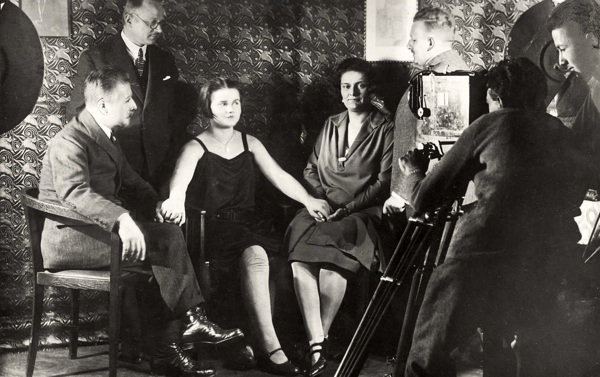
At the age of twelve, frightening events began to occur to Eleanore Zugun. When she visited her grandmother’s cottage in Romania, stones smashed against the structure. Pins and needles flew across the room to scratch her and bury themselves in her arms. Broken dishes added to the ordeal. A witness reported seeing a water jug float through the air and land several feet away. Her grandmother believed Eleanore was possessed by an evil spirit.
Months later, Eleanore was sent to a monastery where she was given an exorcism with no effect. The priests sent her to a lunatic asylum. By that time, newspapers had reported her story, which came to the attention of Fritz Grunweld, a respected researcher. His observations of Eleanore concluded the supernatural phenomena was genuine.
Next, she was invited to live with Countess Zoë Wassiliko-Serecki in Vienna. The countess became her protector and had thirteen year old Eleanore trained as a hairdresser. The strange events continued, including objects appearing out of nowhere or disappearing into thin air. The attacks on Eleanore escalated. She was knocked to the ground, slapped, bitten, had her hair pulled, and things thrown at her. On a couple of occasions, the countess observed an inexplicable moving shadow in Eleanore’s vicinity shortly before phenomena occurred.
Eleanore was taken to London for more testing by the National Laboratory of Psychical Research, and also to Munich, where she was caught cheating. On her return, the activities began to fade gradually, although the attacks against her continued. By the time she turned fourteen, all phenomena ended and her life returned to normal.
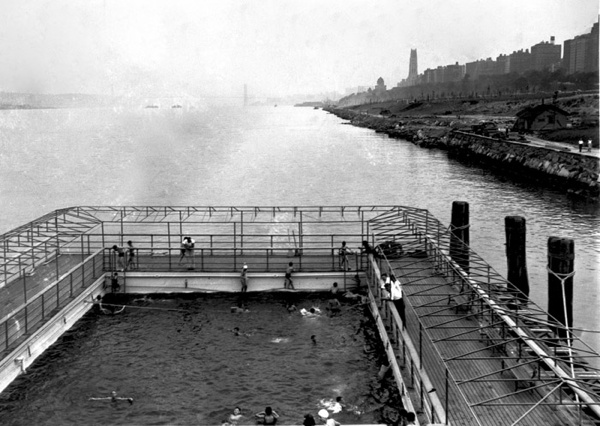
Freak show performer, contortionist, and a man possessing a strange and unique power, Angelo Faticoni’s singular talent was reflected in his nickname—the Human Cork. Faticoni was unsinkable, and he made his living demonstrating that fact.
Faticoni could sleep on his side while floating in water. He could stay afloat for hours with lead weighing twenty pounds fastened to his ankles, and assume any position in the water without danger. He was sewn into a sack with a heavy cannonball chained to his body and tossed into the water. He didn’t sink, but floated up to eight hours in apparent unconcern, now and then peeping his head out of the top of the sack. He is also reported to have crossed the Hudson River fastened to a lead weighted chair.
After testing Faticoni, Harvard University doctors concluded he did not possess abnormal internal organs, but they failed to find an explanation for his amazing buoyancy. Faticoni continued astonishing audiences with his performances in lakes, rivers, and pools. He was investigated numerous times, but no evidence of trickery was ever found.
In 1931, while visiting relatives in Jacksonville, Florida, Faticoni died. Although he promised to reveal the secret of his talent, he never did. He remains a mysterious individual.
Unleash the mysteries of the skies with Unsolved Mysteries: UFOs at Amazon.com!

New Mexico CB radio operators were shocked and concerned on August 7 to hear transmissions from a young boy pleading for help. His name was Larry, he told them, and he was trapped in a red and white pickup truck with his father, who might be dead.
According to Larry, his father had taken him on a hunting trip. At some point along the way, there was an accident and the truck overturned into a gully, jamming the driver and passenger side doors. He said he couldn’t get out, had no food or water, and no idea where the accident had occurred. He also made matters worse by constantly switching channels in an apparent panic. And he thought his father had suffered a heart attack and died.
Much to the operators’ frustration, Larry’s signal faded in and out. Due to atmospheric conditions, his cries were heard in California, Wyoming, and elsewhere. The authorities were contacted and the search for Larry began in New Mexico, somewhere in the mountains where local and state police believed the signal originated. Thousands of civilian volunteers hit the roads, but not all as part of the official search, leading to confusion.
As the days passed, newspapers and TV stations picked up the story. Larry’s signal grew weaker, a sign the battery was running out of juice. Practical jokers began mimicking his voice over the airwaves, adding to the chaos. By August 12, no sign of an overturned pickup truck had been found, no one reported a missing boy, Larry’s signal disappeared for good, and authorities claimed the broadcasts were a hoax. However, no one has ever come forward to claim responsibility and no suspects were named. Were Larry’s cries for help a fraud? Or did a young boy die, trapped and alone? The mystery remains unsolved.

The Martin family’s ordeal in Methuen, Massachusetts began in October when Francis, his wife, and children first noticed a damp patch on the wall in the den. While they watched, the patch grew larger. A moment later, they heard a popping sound and a drenching spout of extremely cold water began spewing from the wall.
Francis Martin immediately ruled out frozen pipes—temperatures weren’t freezing—and he’d recently had the drains cleaned. The inexplicable water spout continued to stream a few seconds before it stopped. The next day, a second spot in another location began to spew water like a fountain. The spray lasted less than half a minute and ceased. The phenomena continued over several more days, with new icy water streams occurring at fifteen minute intervals in various rooms throughout the house, soaking floors, furniture, and occupants. A deputy witnessed a water jet burst out of a wall and spray two feet into the room.
When the Martins moved into a relative’s house, that place was also inflicted with mysterious water streams from the walls. Returning his family to their own home, Francis Martin had the water turned off at the mains. The next day, water spouts began to explode from the plaster walls, often from several spots simultaneously. Gallons of water poured out in twenty second intervals, but the source remained unknown. The Martins moved away again, but were forced to return to Methuen when the water demon followed them.
Gradually, the phenomena tapered off and stopped altogether. The family never discovered what caused the frightening activity. The official explanation? Moisture build-up.
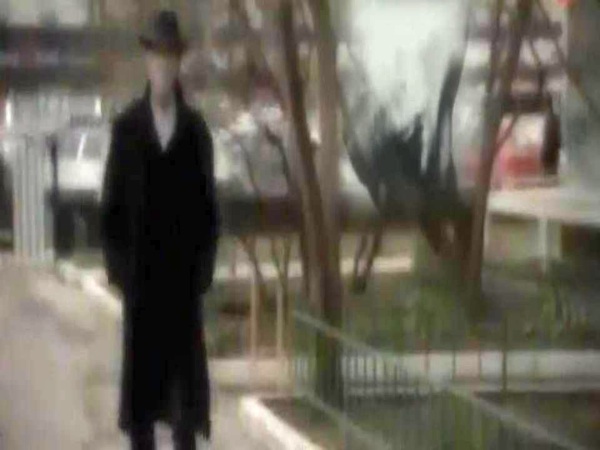
Beginning just before Halloween, the citizens of Provincetown, Massachusetts were startled by the sudden, eerie appearance of a mysterious Black Flash—an impossibly tall, impossibly fast human-like creature who appeared dressed all in black, with a black face, pointed ears, and silver eyes. According to witnesses, the Black Flash also made a loud buzzing sound. He lurked around Provincetown jumping at people, laughing maniacally, and eluding pursuit with extreme agility and speed.
Witnesses would report seeing the Black Flash in one location, and a minute later, other reports would come in of sightings across town. Some said he was a Peeping Tom. Others thought he was a devil with supernatural powers. The town was in such an uproar, frightened children refused to go trick-or-treating that year.
The police believed the Black Flash was the work of practical jokers. Chief Anthony Tarvers claimed he knew the identity of the hoaxers, but he declined to name them. “The Black Flash is dead and buried,” he said. There were no further appearances of the terrifying phantom fiend who menaced the small town. Who was the Black Flash? No one has ever claimed responsibility, and Tarvers died with his secret intact.

In February, eighteen year old Jacquelyn Cadow of Paradis, Louisiana began hearing wolf whistles outside her bedroom window at night. The home she shared with her mother was also broken into by an intruder. She reported the incidents to the authorities, but nothing came of it. Night after night, she heard the same whistles until she announced her engagement to State Trooper Herbert Belsom. The whistler changed his tune to a menacing funeral dirge.
Around this time, Jacquelyn also received telephone threats, the voice on the other end of the call promising to come to her home and stick a knife in her if she went ahead with her marriage. Her sleep continued to be broken by whistling dirges and bloodcurdling moans. Newspapers picked up the story, and hundreds of curiosity seekers began driving by the house in the hope of catching a glimpse of the phantom whistler or his victim.
Jacquelyn suffered a collapse when she, her mother, her aunt, and a New Orleans States-Item reporter heard the whistler at work. The reporter and Belsom searched the yard, but found no one. Investigations by the State police and the sheriff’s office turned up nothing. The harassed bride-to-be, her nerves shattered, tried staying with relatives. The whistler soon followed. And when she went to the home of Belsom’s parents, the whistler called her mother with a message: “Tell Jackie I know she’s at Herbert’s house.”
On October 1, she and Belsom married. Was the whistler at the wedding as he’d promised? If so, he never spoke up, nor did he carry out his threats. The local sheriff considered the case closed—a hoax by persons he declined to name. Who was the phantom whistler and why did he choose to terrify Jacquelyn Cadow? We’ll never know.
